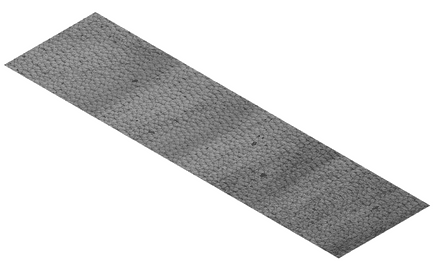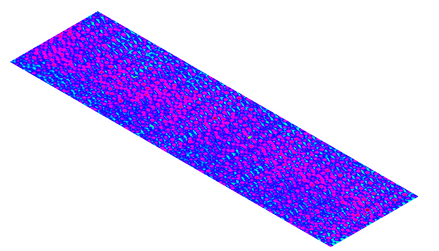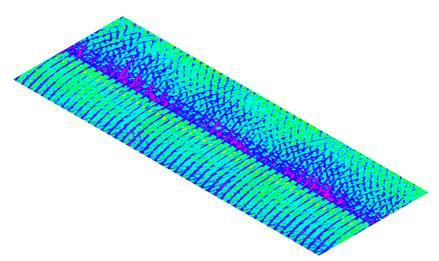Blog
This must sound odd to you: why should roughness measurement be a matter of life and death? We can explain this quite simply: A single implant that does not meet the quality requirements can trigger serious complications. We are thinking of your screws, your prostheses, and even the tools used during open heart surgery. The surface finish of every single one of these components must meet the exact requirements. As you can see, it's a matter of life and death.
Quality assurance has an extraordinary significance in medical technology. Hardly any other industry is so vulnerable when it comes to errors. Even if no industry can do without measurement technology, there is absolutely no room for human error in medicine. The measurement of shape, position, and roughness must therefore be perfectly integrated into production so that deviations can be detected and corrected immediately. And the issue of surface finish in particular is a very delicate one that must be subject to constant monitoring.
If the dental implant is rejected, this has unpleasant consequences. But admittedly, there are worse things. Namely, if the same thing happens to a knee implant or a hip prosthesis. And yes, unfortunately, this does happen. The quality demands on you as a manufacturer are constantly increasing, regardless of whether you are dealing with orthopaedic implants, bone screws, plates or joint prostheses. And the demands on dental implants and brackets are also constantly increasing. The only thing that helps is to measure, test, adapt, and repeat.
Would you like to optimize your measurement processes and achieve high-precision measurement results? Our poster on optical roughness measurement contains metrological terms, measurement tasks, know-how tables, ISO filters and LC filters to support a smooth measurement process.
What you certainly don't need is for your measuring system to cause additional damage to the sensitive biomaterials used in medical technology. That makes sense, you might be thinking. After all, the purpose of metrology is to eliminate errors, not to produce them. But that may not always be the case. After all, tactile measuring systems have to touch the objects to determine the surface roughness, and this is usually done with a diamond tip that moves over the surface. It is also no secret that diamond is the hardest material in the world. This means that fine scratches on the component are inevitable.
-399x314.png)
Knee Implant with Defect
What's more, in medical technology you work with soft - often semi-transparent - plastics that give way when touched by the measuring system and whose surface properties cannot be measured tactilely at all. Medical products such as hip joints with their steep flanks and large height measuring ranges cannot be measured tactilely at all.
Inaccuracies in medicine and medical technology are not only unpleasant and stressful, but they also put you at financial risk. It is therefore better not to leave anything to chance. Now you already know that tactile systems are not the safest way to determine surface roughness. But what then? Optical roughness measurement is the answer. Non-contact roughness measurement allows you to measure hard-to-reach areas on curved surfaces that are inaccessible to the probe. Materials such as plastics, which are also soft, flexible, pliable, or semi-transparent can be evaluated. Optical measurement technology offers you convenient working distances for high vertical measuring ranges, as well as a large measuring volume in X and Y directions with simultaneous measurability of Ra values in the low two-digit nanometer range.
Read here how roughness measurement on implants works with Bruker Alicona devices.
Optical roughness measurement is also particularly useful for determining wear. Even when using titanium, steel or polyethylene with an ultra-high molecular weight, medical technology objects are not immune to a certain amount of wear. This in turn can lead to implant loosening or local bone defects. To visualize this wear, Bruker Alicona's measuring systems work with the Advanced Focus-Variation Technology, which can detect the finest features of the surface finish. It can even make the traces of a tactile probe visible.
In medical technology you need surfaces with different roughness. Every medical device requires different types of friction and therefore the roughness also varies. And yet you are forced to present the surface finish in accordance with ISO standards (ISO 21920). The good news is: We can take this burden off your shoulders: Standard-compliant measurement has never been easier than with the MetMaX software. A measurement plan specifies exactly how the roughness measurement is to be carried out and which tolerances you accept. The standards are, of course, filed so that you can concentrate on the production of life-saving parts.
Want to bet that you have only taken one profile measurement to determine the surface finish so far? If not, then you are already well ahead of your competitors. If you have, no problem. Because the Bruker Alicona measuring systems are ideally equipped for profile measurement. But is that enough? Imagine a knee implant. First in profile. And then the entire surface. And now imagine how this implant is inserted in the patient - logically the entire implant, or have you ever heard of only the profile being implanted? That's why we advise: Measuring the areal surface roughness instead! It is much more meaningful, and Bruker Alicona's measurement technology also offers an ISO-standardized surface roughness measurement on the area – quick and easy to implement.



You have now read a lot about quality assurance in medical technology using optical roughness measurement. But we have saved the best news for last: Bruker Alicona's measuring systems can do far more than just measure surface finish. In fact, you only need one system for all your measuring tasks. This is because the Focus-Variation measures shape, position and roughness in a single process. Our measuring systems can be applied to many products, including
We don't want to withhold one last point from you. You get perfect 3D data of your samples with the Bruker Alicona measuring devices. This gives you a much more meaningful picture than just seeing the roughness displayed two-dimensionally in curves. This is quality assurance that protects you from errors and serves as a seal of quality for your products.